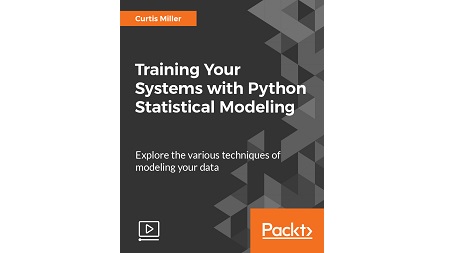English | MP4 | AVC 1920×1080 | AAC 48KHz 2ch | 4h 05m | 0.97 GB
Learn statistical analysis by using various machine learning models
Python, a multi-paradigm programming language, has become the language of choice for data scientists for data analysis, visualization, and machine learning. This course takes you through the various different concepts that get you acquainted and working with the different aspects of Machine Learning.
You’ll start by diving into classical statistical analysis, where you will learn to compute descriptive statistics with Pandas. From there, you will be introduced to supervised learning, where you will explore the principles of machine learning and train different machine learning models. Next, you’ll work with binary prediction models, such as data classification using K-nearest neighbors, decision trees, and random forests.
After that, you’ll work with algorithms for regression analysis, and employ different types of regression, such as ridge and lasso regression, and spline interpolation using SciPy. Then, you’ll work on neural networks, train them, and employ regression on neural networks. You’ll be introduced to clustering, and learn to evaluate cluster model results, as well as employ different clustering types such as hierarchical and spectral clustering. Finally, you’ll learn about the dimensionality reduction concepts such as principal component analysis and low dimension representation.
This course balances in-depth content with tutorials that put the theory into practice. This course will give you both a theoretical understanding and practical examples that show you the art of statistical modeling and training with the help of Python’s various tools and packages.
What You Will Learn
- Find correlations in your data using SciPy
- Train different machine learning models and evaluate their results
- Make predictions using Naïve Bayes Algorithm with the help of Python code
- Employ support vector machines for classification and detection
- Employ ridge and lasso regression models
- Train a neural network
Table of Contents
Classical Statistical Analysis
1 The Course Overview
2 Computing Descriptive Statistics with Pandas
3 Confidence Intervals and Classical Hypothesis Testing –Proportions
4 Confidence Intervals and Classical Hypothesis Testing – Mean
5 Diving into Bayesian Analysis
6 Bayesian Posterior Analysis –Proportions
7 Bayesian Posterior Analysis –Mean
8 Finding Correlations Using Pandas and SciPy
Introduction to Supervised Learning
9 Exploring Various Machine Learning Principles
10 Training Machine Learning Models
11 Evaluating Model Results
Binary Prediction Models
12 Classifying Data in Python Using the k-Nearest Neighbors (KNN)
13 Working with Decision Trees
14 Machine Learning Using Random Forests
15 Making Predictions Using the Naive Bayes Algorithm
16 Working with Support Vector Machines (SVM) for Classification and Detection
17 Logistic Regression with Machine Learning
18 Going Beyond Binary
Regression Analysis and How to Use It
19 Linear Models and OLS
20 Evaluating a Linear Model
21 Exploring the Bayesian Perspective of Linear Models
22 Employing Ridge Regression
23 Employing LASSO Regression
24 Spline Interpolation Using SciPy
Thinking Machines – Neural Networks
25 The Perceptron
26 Neural Network Model
27 Training a Neural Network
28 Regression with Neural Networks
Clustering
29 Diving into Clustering and Unsupervised Learning
30 k-Means Clustering
31 Evaluating Clustering Model Results
32 Hierarchical Clustering
33 Spectral Clustering
Dimensionality Reduction and How It’s Done
34 Objective of Dimensionality Reduction
35 Principal Component Analysis (PCA)
36 SVD
37 Low-Dimensional Representation
Resolve the captcha to access the links!
